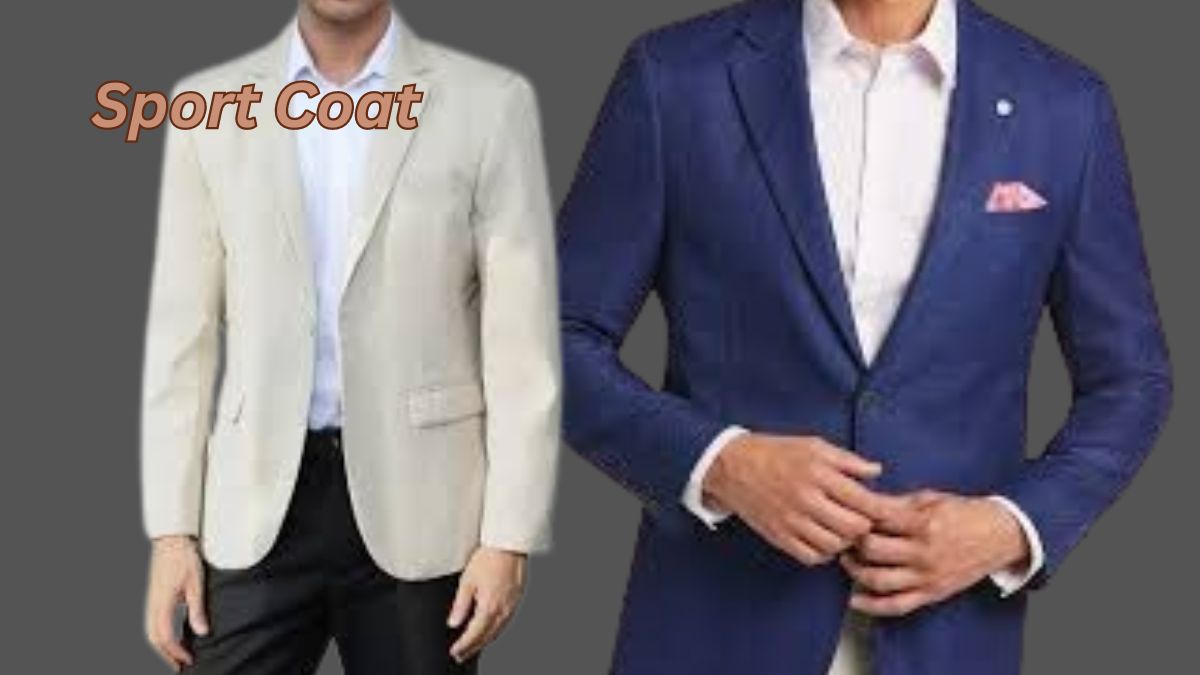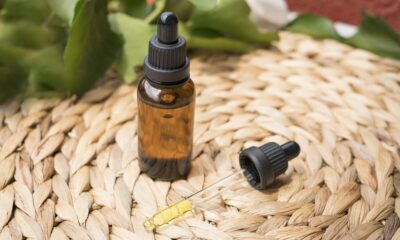SPORTS
The Ultimate Guide to Sport Coats Everything You Need to Know

The sport coat is a men’s wardrobe MVP thanks to its combination of style, comfort, and versatility. The sport jacket (often mistakenly called either a blazer or suit coat) is a somewhat odd and strictly men’s fashion garment. It remains versatile and straddles the divide between relaxed moments to more serious occasions, leaving a practical(duffel) back in style that is still cool.
No matter if you are getting dressed for Friday at work, going out on the weekend, or an event at night; I have always believed that a sports coat is one of those simple items that just spans different dress codes. -This guide delves into the entirety of a sports coat: its history, best practices for wearing it, how to make sure that you are buying one in the correct proportion, and much more.
What is a Sport Coat?
A sports coat, also known as a sports jacket, is a type of men’s jacket that is less formal than a suit jacket but more sophisticated than a casual jacket. Historically, sports coats were designed for outdoor activities like hunting and sports, hence the name. Unlike blazers, sports coats are made from a variety of fabrics such as tweed, corduroy, or flannel, and often feature patterns like houndstooth, plaids, or checks. These fabrics and patterns give sports coats their distinct character and make them ideal for adding texture and visual interest to an outfit.
A Brief History
The origins of the sport coats date back to 19th-century England, where they were worn by gentlemen partaking in hunting, shooting, and other outdoor sports. Initially, these coats were made of sturdy fabrics like tweed to withstand the rugged outdoor conditions. Over time, as fashion evolved, sports coats made their way into everyday men’s wardrobes, becoming a symbol of refined yet relaxed style.
The Difference Between a Sports Coat, Blazer, and Suit Jacket
While sports coats, blazers, and suit jackets may seem similar, key differences set them apart. A sports coat is usually more textured and patterned, ideal for a casual or semi-formal setting. A blazer, typically solid-colored, often navy, and featuring brass or metal buttons, is more formal than a sports coat but less so than a suit jacket. A suit jacket is always part of a matching set with trousers and is designed from finer, dressier fabrics. Understanding these distinctions can help you choose the appropriate jacket for any occasion.
Why You Need a Sports Coat in Your Wardrobe
A sports coat is one of the most versatile garments a man can own. It can be paired with jeans for a casual look, worn over a shirt and chinos for business casual, or dressed up with a tie and dress pants for a more formal setting. Here’s why a sports coat is a wardrobe staple:
- Versatility: Suitable for both casual and semi-formal events.
- Comfort: Designed to allow more freedom of movement than a suit jacket.
- Style: Adds texture, color, and personality to your outfit.
- Seasonal Adaptability: Available in a range of fabrics suitable for different weather conditions.
Choosing the Right Sports Coat: Key Considerations
Fabric and Texture
When selecting a sports coat, the fabric is an important consideration. Sports coats come in a variety of fabrics, including:
- Wool: Perfect for colder months, providing warmth and comfort.
- Cotton: Lightweight and breathable, ideal for spring and summer.
- Linen: A great choice for hot weather, offering a relaxed, airy feel.
- Tweed: A heavier fabric, ideal for fall and winter, adding texture and warmth.
The texture of the fabric also plays a significant role. Sports coats with a coarser texture, such as tweed or herringbone, are suitable for casual settings, while smoother fabrics like cashmere or lightweight wool can be dressed up for more formal occasions.
Color and Patterns
Sports coats are available in a wide range of colors and patterns. While neutral colors like navy, gray, and brown are versatile and timeless, don’t be afraid to experiment with bolder colors like olive green, burgundy, or even pastels. Patterns such as checks, plaids, or houndstooth can add interest to your look. However, for a beginner, starting with solid or subtle patterns is advisable for versatility.
Fit and Style
The fit of a sports coat is crucial to its appearance. A well-fitting coat should have a snug shoulder fit, with sleeves that end just above the wrist bone. It should be tailored to fit comfortably around the chest and waist, allowing enough room for layering but without appearing too loose or boxy.
There are different styles of sport coats, including:
- Single-breasted: Classic and versatile, suitable for most body types.
- Double-breasted: Offers a more formal and structured look, ideal for taller individuals.
- Unstructured: Features minimal padding and lining, providing a more relaxed and casual appearance.
How to Style a Sport Coat for Different Occasions
Casual Settings
For a casual look, pair a sports coat with a simple crew-neck t-shirt or a polo shirt, jeans, or chinos, and loafers or sneakers. Opt for sports coats in lightweight fabrics like cotton or linen, and play with colors or subtle patterns to add a fun twist.
Business Casual
For a business casual look, a sports coat can be worn over a button-down shirt with tailored trousers or chinos. Complete the outfit with leather shoes, such as loafers or brogues. Choose sport coats in neutral colors like navy or charcoal for a more professional appearance.
Formal Events
For semi-formal or evening events, pair a sports coat with a dress shirt, tie, and formal trousers. Opt for sport coats in darker shades and finer fabrics, such as wool or cashmere, to achieve a polished look. Adding a pocket square or lapel pin can further elevate the style.
Sport Coat Dos and Don’ts
- Do: Choose a sports coat that fits well on the shoulders and allows ease of movement.
- Do: Pair it with different types of pants – jeans, chinos, or dress trousers – depending on the occasion.
- Don’t: Wear a sports coat with matching trousers; that would create a mismatched suit.
- Don’t: Over-accessorize; let the sports coat be the focal point of your outfit.
Maintaining Your Sports Coat
To keep your sports coat looking its best, follow these care tips:
- Dry Cleaning: Avoid frequent dry cleaning to preserve the fabric; spot-clean instead.
- Storage: Hang your sports coat on a sturdy hanger to maintain its shape.
- Brushing: Use a clothing brush to remove dust and lint, especially for wool and tweed coats.
- Ironing: Steam out wrinkles rather than using a hot iron to prevent fabric damage.
Conclusion
A sports coat is an indispensable piece in any man’s wardrobe, offering endless versatility and style. Whether dressing up or down, a well-chosen sports coat can elevate any look, making it perfect for a range of occasions. By understanding the different styles, fits, and ways to wear a sports coat, you can make it a key element of your fashion arsenal.
Read more: Glowing Safely: The Advantages of Bronzing Over Sunbathing
Frequently Asked Questions
What is the difference between a sport coat and a blazer?
A sport coat is usually more textured and patterned, made from materials like tweed or corduroy. A blazer is typically solid-colored, more formal, and often has distinctive metal buttons.
Can a sports coat be worn in summer?
Yes, sports coats made of lightweight fabrics like cotton or linen are ideal for summer.
How should a sports coat fit?
A sports coat should fit snugly on the shoulders, with sleeves ending just above the wrist. It should offer enough room around the chest and waist for comfortable movement.
Can you wear a sports coat with jeans?
Yes, pairing a sports coat with jeans creates a stylish and smart casual look.
What colors are best for a versatile sports coat?
Neutral colors like navy, gray, and brown are versatile and can be paired with various outfits.
How often should a sports coat be cleaned?
It’s best to clean a sports coat only when necessary, ideally once or twice a year, to preserve its fabric and shape.

-

 HEALTH3 months ago
HEALTH3 months agoExploring the Best Cannabis Product Options for Every Lifestyle
-

 BUSINESS3 months ago
BUSINESS3 months agoOn the Frontlines of Conservation: The Role of Tracker Academy Graduates in Anti-Poaching
-

 NEWS3 months ago
NEWS3 months agoLeading Law Firms Specializing in Real Estate Expertise
-

 GUIDE3 months ago
GUIDE3 months agoComparing Online Ordering vs. In-Store Visits at Cannabis Dispensaries